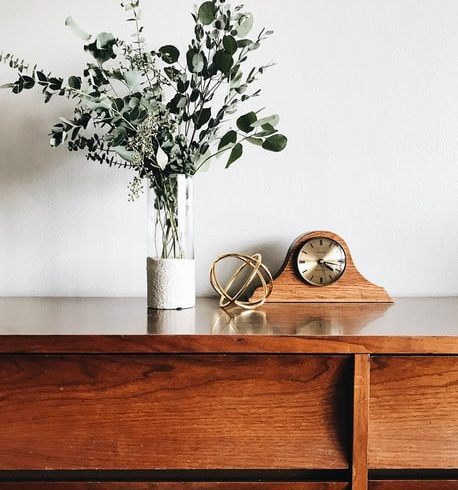The Scandinavian design trend that dominates furniture industry is because many people still like simple minimalist furniture. During the period 2012 until now, the increase of northern European-style furniture is still very high. This simple is not only in terms of design, the finishing of the furniture also uses simple but classy techniques. Open Pore Furniture Finishing is widely used for minimalist and Scandinavian designs because it is faster and strengthens the natural accent of exotic wood. Several antique, industrial, traditional contemporary furniture concepts use this type of finishing.
Open Pore Finishing is one of the finishing techniques by coating the surface of wooden furniture but intentionally leaving the wood pores open. In contrast to closed pore finishing, this type of finishing aims is to make the pores of the wood still exist. Especially when the surface of the furniture is touched. With those wood pores that are still palpable, then the value of the natural wood is still there.
By using this type of finishing, the furniture looks more simple and natural while still highlighting the aesthetics of wood as the basic material. The wood pores are left open so that the wood fibers are clearly visible, especially for teak wood fibers. The surface of the furniture is wavy following the wood grain and the open pores are very feel good but still smooth when touched.
Generally, the finishing materials used for the manufacture of open pore finishing are more environmentally friendly. Furniture with open pore finishing is actually in great demand. In addition to the export-import policy which prohibits the use of excessive hardener or finishing hardener, such as in closed pore furniture finishing. What is clear is that the open pore finishing has approved for food grade standards.
How to Finish The Open Pore Techniques With NC Materials
The finishing process below is for applications with Nitrocellulose open pore finishing materials. We can only explain in outline and not technical skills or applications. Each process requires layered quality control with strict SOPs from each production post.
Raw Wood Sanding Process
Open pore finishing is very minimal use of materials in the finishing process, either sanding sealer to top coated. To produce a flat and smooth furniture surface, the sanded process must be repeated in the direction of the wood grain or groove. This process is the main focus of open pore finishing and takes a long time. Ensure the wood is completely flat and smooth even without finishing materials.
Base Coating Process
Giving a layer of sanding sealer as a basic coating is to smooth the pores of the wood. Using Nitrocellulose sanding sealer material by spray it in 1-2 times evenly over the entire surface of the wooden furniture. Sanding sealer is also needed to glue the color layer so that it sticks firmly to the sealer layer. This also the point that distinguishes it from closed pore finishing that uses sanding sealer material of 3-5 times spray until the wood pores are tightly closed.
Furniture Coloring Process
For the coloring process, make sure that after the sanding sealer process, the furniture has sanded properly and cleaned of sanding wood dust. Using wood stain NC dye for one spray, but evenly distributed over the entire surface of the furniture. Especially if there is a different color of wood, it can be repeated until the color is maximum.
Sealer Sanding Process After Coloring Process
Coating sanding sealer after the coloring process generally serves to maintain color and strengthen the color layer. It is only one spray with NC or Nitrocellulose sanding sealer material. This process is standard technique to produce good color quality. This sanding function is to make it clear or top coated layer will later firmly adhere to the color layer.
Spray Top Coated / Clear Process
After all the processes, starting from sanding the raw wood to sanding the coloring sealer, then spray top coated. The finishing material used is clearly nitrocellulose which functioned to smoothing and adding its aesthetic value. Clear or this top layer will enter the pores of the wood that still open so that the appearance looks hollow and rough but if you touch it, then it will feel flat and smooth.
–sh












